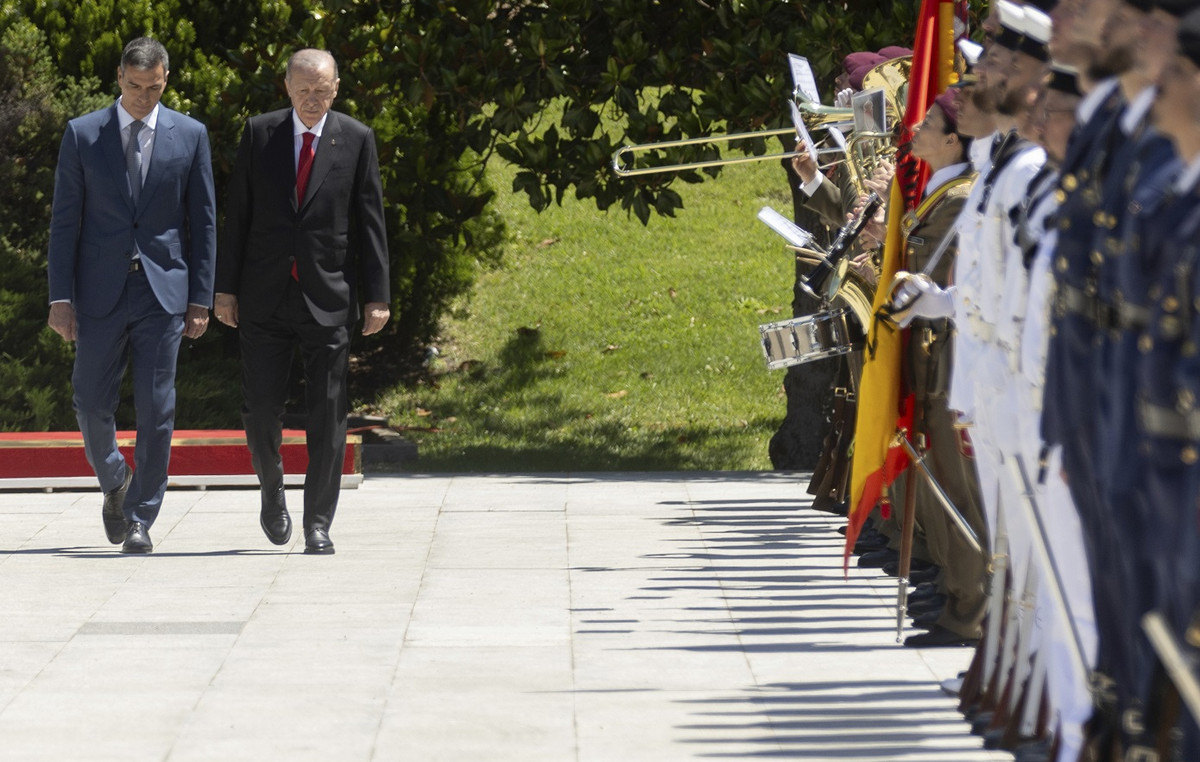Hit by two catastrophic floods in the space of just six months, after having faced almost three years of relentless drought, Rio Grande do Sul became an example of what climate change can do with events already considered extreme, but which have reached increasingly worse proportions in a world that is unable to contain the increase in global temperatures, experts say.
In the last days, the state was the scene of an unfortunate confluence , explain scientists. On the one hand, an extremely strong El Niño, with all oceans warmer, not just the Pacific, as is common in the phenomenon, and a heat wave in the Southeast and Midwest, which increased humidity in the air and favored arrival of hot and humid air in southern Brazil.
On the other side, coming from Antarctica, a cold front with rain and gales, but without the strength to push the hot air. In addition, with El Niño, the fronts move from east to west, instead of south to north, which causes it to rain longer in one place, explains researcher Marcelo Schneider, from the National Institute of Meteorology (Inmet ).
The combination of factors, however, is not completely out of the ordinary, but rather their intensity. Scientists explain that Rio Grande do Sul has always been the meeting point of tropical systems and polar systems , which created a pattern that included periods of intense rain and others of drought. The exacerbation of phenomena caused by climate change, however, increases the shock of these systems, worsens phenomena such as El Niño and La Niña, and leaves the climate unpredictable.
“Climate change has more impact than El Niño alone. These typical characteristics of RS are becoming more accentuated with climate change. The rivalry between the warm and humid tropics and the Southern Region towards Antarctica has favored severe storms, intense cold fronts, explosive cyclones, and more extensive hangovers”, explains researcher Francisco Aquino, head of the polar and climate center of the Federal University of Rio Grande do Sul (UFRGS).
El Niño corresponds to the increase in the temperature of the waters of the Pacific Ocean in its equatorial portion, while La Niña corresponds to the decrease in the temperature of these waters. In Brazil, El Niño causes greater rainfall in the South, while La Niña decreases rainfall in the region .
Until mid-2023, the state was facing a historic drought, the result of a long period of La Niña, which lasted for more than two years, with very few periods of rain. The federal government even studied the implementation of a cistern system in some regions, in the same way it did in the Northeast.
There were three consecutive years of agricultural harvest failures in the state due to drought, with a direct impact on the Gross Domestic Product (GDP). From a share of 6.53% in the country's GDP in 2019, to 5.90% in 2023, according to data from the Department of Economics and Statistics of the Rio Grande do Sul government.
In September last year, already under the effect of El Niño, the state was underwater due to the passage of an extratropical cyclone, in a flood that was already considered historic, with more than 50 deaths recorded.
Now, just six months later, new floods have broken records again. At this time, almost half of Rio Grande do Sul's municipalities were hit by rain, in different regions of the state, with at least 31 people dead and more than 70 missing, according to data from the state Civil Defense.
“Not every El Niño year has disasters of this magnitude. It is remarkable that we have more and more disasters and they are getting worse. Global warming changes weather patterns and extreme events become increasingly frequent. A warmer atmosphere holds more moisture, just as a warmer ocean generates more energy, more fuel for severe storms. So everything becomes more powerful”, summarizes researcher Karina Lima, PhD student in Climatology at UFRGS.
Lima explains that so-called attribution studies, which check whether an extreme event has become more likely and/or more intense due to climate change, have not yet been carried out. “But it is very difficult for an event of this magnitude not to have had an influence,” he says.
The Secretary of Climate Change at the MMA, Ana de Toni, highlights that there is no doubt that the country is already experiencing a climate emergency and that cases such as Rio Grande do Sul and the extreme drought in the Amazon, effects of El Niño, were exacerbated by changes in climate.
“We have to adapt. Of course, that doesn’t mean we’re going to leave mitigation aside, but at the same time we have to adapt to a world that will live with a higher temperature,” she said.
Toni explains that Brazil is very vulnerable to climate change, with a very strong agricultural economy that depends on weather patterns, energy based on hydroelectric plants and a large population living in vulnerable situations.
“Adaptation is very, very urgent. The cost of inaction is much greater,” she says.
The government is working on adaptation plans in 15 areas, including agriculture, infrastructure, cities, among others. Some of the measures, for example, are plans to remove residents from slopes, which are always vulnerable to rain; the development of more resistant seeds; infrastructure studies for the construction of roads, bridges, etc., which are more resistant.
“We are experiencing these climate changes, which are coming much faster and much stronger. We need to adapt and mitigate at the same time,” she argued.
Source: CNN Brasil
I’m James Harper, a highly experienced and accomplished news writer for World Stock Market. I have been writing in the Politics section of the website for over five years, providing readers with up-to-date and insightful information about current events in politics. My work is widely read and respected by many industry professionals as well as laymen.







